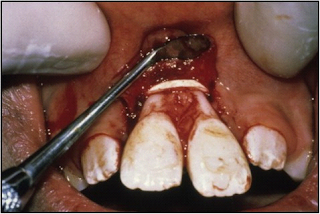How to survive Halloween with
Braces….
With Halloween quickly approaching & the smell of pumpkin
spice in the air, we at Barnett Orthodontics, want to give you a few tips
to help you survive Halloween with braces. Many of our patients are anxiously
anticipating a night full of spooky fun.
Unfortunately, some of the candy you collect trick-or-treating can cause
serious damage to your teeth, especially if you have braces. This does not mean
that you have to skip trick-or-treating, or even give all of your candy to
mom & dad at the end of the night. It does mean that you will need to be
careful in selecting what you can & can’t eat from your stash.
Candies to Avoid with Braces….
First, let’s go over the candy you
should avoid if you have braces or other orthodontic appliances. Sticky, chewy,
candy like gummy bears, taffy, bubble gum, caramels, can cause painfully sticky
situations or even an extra trip to the office to fix a loose bracket or broken
wire. These treats can get stuck in your braces and make it very difficult to
remove with brushing & flossing. The stickiness also tugs on the wires,
brackets and appliances.
Hard candies, such as, suckers, candy coated apples, peanut
brittle, and any candy containing nuts can also pop off a bracket & break
wires when you bite into them.
Candies that are Safe Treats….
Ideally, you should always try to stick with softer treats
that will melt in your mouth. Some examples of these safe treats would be
peanut butter cups, soft chocolate bars, apple slices that are cut into smaller
pieces, soft mints, doughnuts, cakes, pudding, and pies. You could even choose
to have milkshakes or ice cream before or after you go trick-or-treating.
Most Importantly….
Finally & most importantly, if you decide to have any
kind of candy this Halloween, even the safe treats, make sure to remember to
brush & floss quickly afterwards. The sugars in the candy interact with the
bacteria in your mouth to form an acid which will eat away at your tooth
enamel. The quicker you remove the sugars from your mouth, by brushing &
flossing, the less likely you are to have any lasting damage to your teeth.
Contact Us…
Have more questions about surviving Halloween with braces or
need to come in for a visit? We’re here for you! You can reach out to us at our
contact page or call the office at (330)745-4497. We can’t wait to hear from you & hope you
will continue to visit our blog for more tips & tricks on life with braces!








